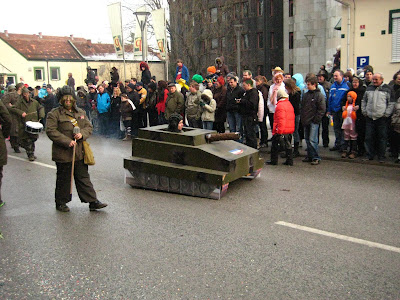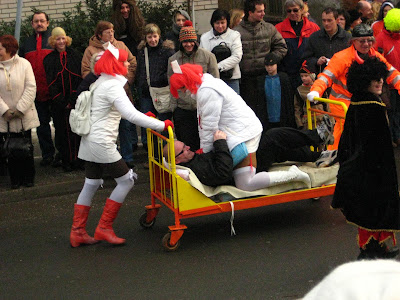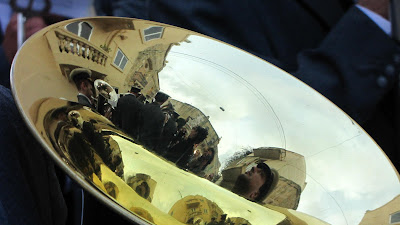Marsaxlokk
This small town is a fishermen town. You could find there all different models of Maltese boats.
‘Luzzu’
One is called ‘Luzzu’ – a traditional Maltese fishing boat. This boat is really colourful and has a double-ended hull. Traditional colours are blue, yellow, red and green.
The bow is always with a pair of eyes – Phoenician ones. These eyes always find a way back home. The Luzzu is one of the symbols of Malta and is featured on the reverse of the older series (1979-89) of Maltese lira coins. The design of the Luzzu, like that of another Maltese boat, the dghajsa, is believed to date back at least to the Phoenician times.
The Luzzu has survived because it tends to be a sturdy and stable boat even in bad weather. Originally, the luzzu was equipped with sails although nowadays almost all are motorised, with onboard diesel engines being the most common. Some luzzi have been converted to passenger carriers for tourists although the vast majority continue to be used as fishing vessels.
‘Fejgatina’
Another model is ‘Fejgatina’ – it’s built for work, for the enjoyment of the family or for competitions. Its size made it more popular and more reachable for commoners.
It’s normal size is approximately 12 feet long and 5 feet wide, though those used at Wied iz-Zurrieq (to take tourists to Blue Grotto) are a little bit longer – approximately 16 feet. It’s not built for rough seas, so it’ more considered as boat used inside the harbour area and not to venture in rough seas. In the past it used to have sails or paddles, but today it’s powered by engines (could be inboard or outboard).
There are various variants of this type of boat, like ‘id-Dingi’ (the smallest form) and ‘il-Gigg’ which is narrower (around 4 feet wide). Those used for races, are much lighter, narrower and built for a better forward move (less stable).
‘Kajjik’
Next one is ‘Kajjik’ - when a fishing boat is built which is less than 16 feet long, one must be careful designing its stern, as most of the work of the fisherman is done from there.



‘Firilla’
The last model is ‘Firilla’ - this type of a boat is more or less a compromise between the Luzzu, which is built more to endure the rough sea. The Kajjik, which though is smaller, but is also built with the intention of venturing into rougher seas (outside the harbour area), and the frejgatina, which is quite small. The fisherman (or the person using the Firilla, as it’s not just a fishing boat), wanted the sturdiness of a Luzzu, the lightness of a Frejgatina, so that he can paddle without extra effort. So, it’s pointed both on the stern and bow. At the bow, it’s lower than the Luzzu and it’s narrower. Today not so much common.
Information about Fejgatina, Kajjik and Firilla I have from my Maltese friend Stefan Cassar who translated it for me from the book by Carmel Pule.
The Marsaxlokk Fish Market
Every Sunday there is the Fish Market where you could buy all kinds of Mediterranean fishes and all Maltese souvenirs. The market starts early morning and ends at about 2 pm.
You could find there fresh crabs, tunas, dolphin fish (lampuka), octopus and all kind of sea food. Many companies organise transport from hotels but if you wish have a typical atmosphere you need to go there by bus no 27 from Valletta. In the village there is a church and on the sea usually many different kinds of Maltese boats.
During the day you can observe how they work hard with the boats. There are few methods how to drawn boat to the shore, sometimes they need to work with 4 or 6 people. In my opinion now the Fish Market it’s more souvenirs market.
Sometimes you could find only few stalls with fish and a lot with souvenirs, clothes or fruits and vegetables. However, in a sunny day it’s worth to go there to see colourful boats and how fishermen work.
The Good Friday Procession in Valletta and Mosta
This year I visited The Good Friday Procession in Valletta. It started at about 6.30 pm from the St. John’s Cathedral. I was there before 6 pm so I visited few Easter exhibitions about the Passion of Christ.
There were many of them, some in usually unavailable places so I visited interesting basements or a small chapel.
In Valletta there were more children involved in this procession. They kept some information about a character from the Bible following them or some things like a nail or a crown of thorns.
Young boys kept a small figure and men kept the big ones. Sometimes children were really bored and their eyes were looking for friends or parents. I decided to go to Mosta but before I visited the cathedral.
In Mosta they changed the route from last year and I was almost at the end of procession.
I saw many people with the chains attached to legs and of course keeping different statues. This time it wasn’t so incredible for me like it was the last year.
The Laferla Cross - a hill overlooking the whole island
Despite worrying weather forecast, more than 20 people appeared to take part in a walk to the Laferla Cross - almost the highest point in Malta ( about 300 m above the sea level) not to see the statue with the steel cross but to admire the views from the hill.
If you're lucky enough and the sky is clear you can see even Sicily from there. What I managed to see from there are the Busket Gardens' Palace, Mdina, coastline near St. Paul's Bay, Mosta Dome, Pembroke Tower and Valletta. Quite impressive viewpoint. I guess it's the best in Malta.
The meeting point was in Siggiewi, on a main square with an interesting baroque church of St. Nicholas.
You can't miss it because it's in a very central part of the town. Every bus finishes and starts its route from there. The only bus connection is from Valletta as usual. Bus no. 89.
Having the church behind you, the way leads right. Any street you take it will lead you to the point where the hill with the cross is visible. For the more gentle ascent we followed the street on the laft hand side ignoring marks 'Laferla Cross' while leaving the town. We passed the old parish in Sigiewi which is now being restored and unused, old an ruined cementery.
50 minutes later... we felt the power of the wind on the hill. No chances for a picnic. Just a while for admiring the views, another one to take a picture. The cross was built there to mark the beginning of the 20th century in 1903 and named after the initiator of the idea, Dan Pawl Laferla. the original one was destroyed so we see just the copy now. Next to it is the Annunciation Chapel with an underground chapel which is closed to the public.
The descent we chose was a steep sandy patch with rocks with stages of the way of the cross along it.
So, you continue the way down passing firstly, the Christ crowned with thorns. There is written that if you pray in front of the statue you'll have to spend less days in the purgatory after death. The first one gives you minus 40 days, the next ones too.
At the end of the path you'll find a crossroad with an another statue depicting someone in the flames in purgatory. It is believed that if you prey there the number of days you need to spend there will be less of 400 days.
Go straight from this crossroad following a small country road to Sigiewi.
I need to come there on Maundy Thursday as I heard that the whole way uphill is lit with candles.







































































